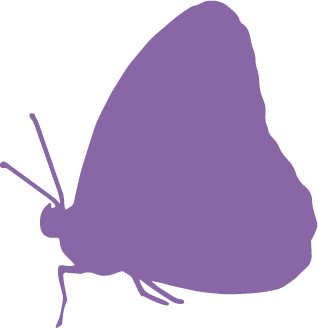Whose voice counts in protecting our green spaces?
by Helene Schulze

“Care is a human trouble, but this does not make of care a human-only matter.” Maria Puig de la Bellacasa
I stared at the timber panels trying to imagine what might be going on behind them, in the safety of the rich, dark earth. We built the Forest Garden planter as a sort of demonstration site to show how all of the plants nestled within it interacted with one another, fulfilling different functions, building an ecosystem and supporting each other. Remembering this, I drew all the creatures I hoped were now thriving: munching, mating, ruminating, in the safety of the soil. Then I drew all the creatures I could see buzzing around the leaves and flowers. Then I thought of those critters that would only come in the safety of night, to burrow and forage, or at the very least those that weren’t interested in the company of humans. I drew them all on a cross-sectional sketch of the Forest Garden planter as part of the Pets and Pests workshop.
The Garden of Earthly Delights, in its first iteration, was nestled behind the Iceland at Hackney Central Station, on a forever bustling, large connecting road. It had stood derelict for many years prior, earmarked for a future development expanding the station entrance. In the meantime: it was empty.
We occupied the site with the intention of building a ‘pop up garden,’ a vital, abundant green pocket. We wanted a habitat for local wildlife, as well as a warm, inviting space for local residents to relax, play, grow and eat together. Within a month, thanks to the tireless energy of many, we did just that: built a garden from scratch using almost solely repurposed materials and donated tools.
I drew arrows on the sketch to name the insects I knew I wanted to find in the soil (earthworms, ground beetles, springtails) as well as those that had caused us some trouble (slugs, snails, cabbage white butterflies). I marked on the few birds I’d been able to identify and had seen in the garden. I noted the local foxes, the rats, the bats that flitted across the sky in balmy summer evenings. I thought of the dogs visitors brought into the garden that enjoyed jumping and running freely. I thought of the local cats prowling, on the hunt. Eventually I drew myself, a little way off from the forest planter, perched on an old stool.
For several years the garden flourished. An evolving collective of growers, artists, architects, carpenters, local residents and activists looked after the space. We grew food offered for free harvest to all who wanted, hosted workshops for kids, learned from one-another about the different ways of growing food. We held events around the fire and gathered to garden together over hot summer weekends. We hosted seed swaps and gave away plants. We taught people to build their own windowsill planters and gave many away during lockdown so that local residents could feel all the benefits of growing at the height of the pandemic, when the garden itself had to shut. We built a strong community, and the space was carefully maintained and dearly loved.
After drawing myself on the cross section of the planter, I realised I’d only drawn all the creatures I could easily identify with my eyes. I thought of all that unidentifiable to my imprecise eye, to the vibrant, pulsing microbial life. They must all be in the soil as well. And in my gut and the guts of many other animals I’d listed. How long this list now becomes.
We knew that we’d have to leave the space at some point. The station expansion was on the cards and the Council would want us out. All the same, it was sad when it did come. You become attached to a space, to the people you meet within it, to the way it makes you feel when you pass through the gates.
We vowed to work as closely as possible with the local council, so we could bring some flavour of this special place to the station development. Our arguments were plentiful: green spaces are essential for our wellbeing, they clean up polluted air, they are a space for our kids to play, they offer opportunity to learn about the natural world etc etc etc. The list is long and we rattled it off.
Yet we spoke primarily from a human perspective. Yes, we mentioned the garden as a habitat for local wildlife but we didn’t have all too much evidence to substantiate this claim. We also weren’t under the impression that even if we did indeed have this evidence, it would support our case. It seemed that only proof of bat habitats would impact the development process.
What about all the other creatures I drew on my cross section of the forest garden planter? What if I had come to the council meeting with a list of all the species and how they relied on the garden for their home or food?
How might our conversation have changed? ‘Right, if we’re closing the garden, then we’re going to have to rehome these beings.’ These are creatures that would have a much harder time on the concrete and glass surfaces of the new proposed entrances. Many of them we can’t see so readily, or they come when we are not there, but they are also stewards of this space. They make and enrich the soil, they pollinate our flowers and create rich webs of life. The garden wouldn’t exist without them. And yet they have no voice in decisions about their home, these species are hardly considered at all.
Care begins with paying attention, with training the eye to observe closely the things we might usually pass over. It’s about really understanding the multitude of critters in the garden, getting to know them, seeing what they offer, what they need. I wish I had known them better earlier, so that I might have better brought them to the table in discussion with the Council. Whilst I can never speak fully for other creatures, I can learn to listen, and I can try, clumsily and forever imperfectly, to have their backs when it counts.
